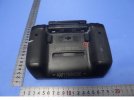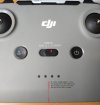I downloaded Litchi for the
Mini 2 a couple of days ago and I have to say it is awesome! It takes the
Mini 2 to an entirely new level. Here's some of my experience with the app.
As well as using it on my usual mobile device (that I use with the DJIFly app) I also downloaded it onto a 2017 Samsung Galaxy Tab A (a low spec 64 bit tablet that won't even open the DJIFly app), just to see if I could. Seeing as how Litchi downloaded on the Tab A, I decided to give it a try to see if it would actually run the app. I set up a mission on the Tab A and successfully flew it without a problem. So there may be no need to go out and buy a new high spec 64 bit device with Litchi. The video feed seems to be a little slower than my phone, but it is definitely still usable. My phone still gets warm using Litchi, so I'm not too sure that using something like a Tab A would be advisable for long flights.
The GPS Follow mode is amazing. It will lock onto your phone's GPS and follow you at a pre-determined height and distance, even if you are behind a building or hop into a car.
The Waypoint Missions are incredible! You can set one up in just a few seconds and you're off! You can set up a figure eight track with a Point Of Interest (POI) somewhere on the map and the drone will lock the camera to that spot if you want it too, during all or part of the flight. You can set multiple POIs and have the drone point to them one at a time at various waypoints. You can vary your altitude and your speed, as well as control the direction the drone is pointing manually. I've flown a heap of these and have had no problems.
You can also access unencrypted Litchi flight logs! (Android/data/com.aryuthere.visionplus/files/flightlogs/) So now you can graph out any information you want; for example, time plus voltage, or an XY plot of latitude and longitude, whatever you want. It shouldn't take long for someone to write up and share some code that will allow us to do our own off-line flight analysis. Hopefully they'll support Linux. ;-)
The RTH works like it should, although you'll get an error message if you're too close to the home point. The RTH beeping is a lot quieter using Litchi.
There is a signal strength display for the camera feed as well as one for the RC signal, so you'll know if your video is about to drop out but be also be able to check how much RC signal is getting to the drone, so video glitching isn't as scary as it used to be.
I've made a ton of flights and gone through multiple batteries and I have not had a single problem. So far...
The only thing I don't like about the app is the lack of an attitude indicator. I rely on the one on the DJIFly app to give me an idea of wind strength and direction. On the Litchi app, the only indication of wind strength is your speed, and unless you're using full stick then that isn't much use and if you're using a programmed speed then, again, you're not going to get any useful indication.
There is still a lot of the app I haven't tried yet, but what I have tried has worked as it is supposed to. The only thing you have to be very careful about is setting a safe altitude and know where any potential obstacles are, no matter what mode you are using. Double check EVERYTHING! TWICE!!!






















